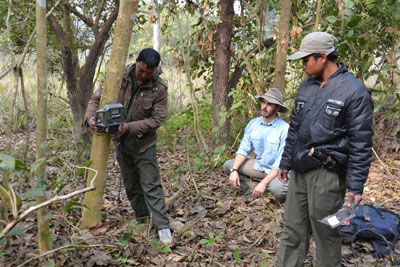Doctoral student explores Nepal’s balancing act of having tigers as neighbors
Add Summary

There’s a delicate, complicated dance between tigers and people in and around the Chitwan National Park in Nepal -- a dance that's duplicated across the world where wild animals and people share a backyard.
Call it the human-nature tango.
Neil Carter, a conservation biology doctoral student in MSU's Center for Systems Integration and Sustainability, wants data on that dance. He is working to understand how people and tigers move in respect to each other, both directly and indirectly. Carter also seeks a better understanding of how tigers’ behavior changes the behavior of their human neighbors, and vice versa.
 Carter is one of a new breed of scientist mixing and matching the sciences of sustainability across the natural and social disciplines. As part of CHANS-Net, he strives to find sustainable solutions that both benefit the environment and enable people to thrive.
Carter is one of a new breed of scientist mixing and matching the sciences of sustainability across the natural and social disciplines. As part of CHANS-Net, he strives to find sustainable solutions that both benefit the environment and enable people to thrive.
He uses camera trapping to understand the tigers, their prey, their competitors and the people in their habitat.
Carter's work has a strong social science component as he evaluates local attitudes and tolerance towards tigers -- the first time this had been done systematically.
His goal: Incorporate all the relationships into a model that can be used to forecast tiger-human interactions, then create conservation policies that promote long-term coexistence between humans and tigers.
 Spartan Saga on Carter and his work in Nepal
Spartan Saga on Carter and his work in Nepal



 Print
Print Email
Email




